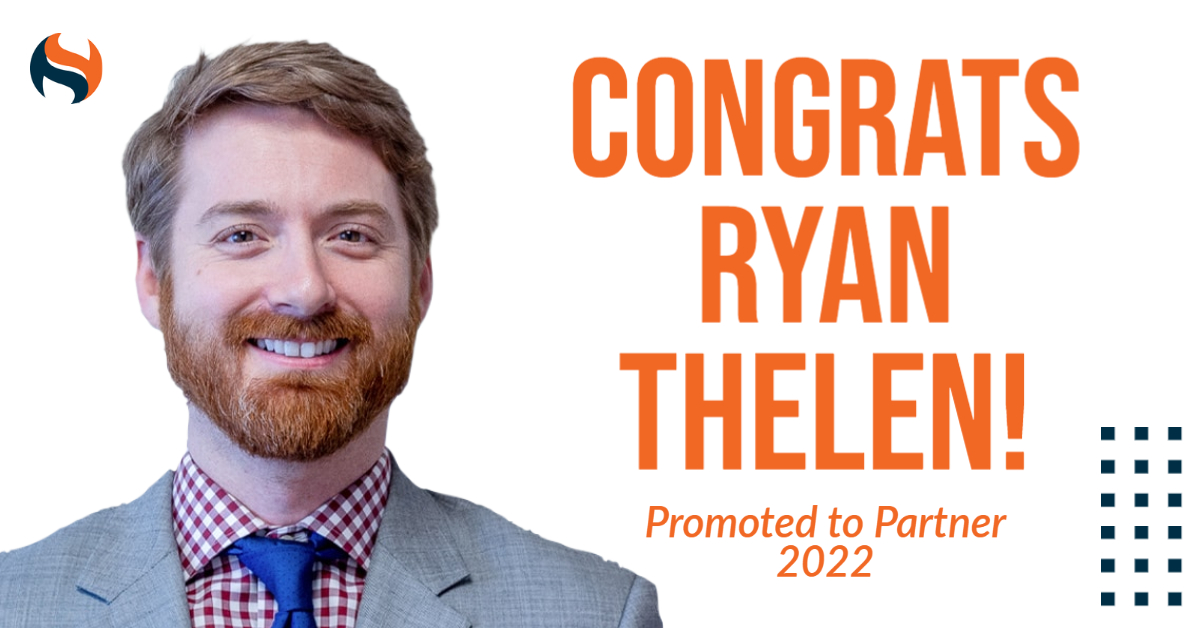Harrity Names Ryan Thelen as Newest Partner
Congratulations to Harrity’s newest Partner, Ryan Thelen!
(WASHINGTON, DC) Harrity & Harrity, LLP, a leading patent law firm based in Fairfax, VA, is pleased to announce the promotion of Ryan Thelen to the position of Partner with the firm. Harrity & Harrity operates nationwide, with 37 total patent attorneys and agents across 26 states. Ryan is Harrity’s 8th Partner and first promotion of 2022.
Ryan has been with Harrity since 2018. His practice focuses on the preparation and prosecution of patent applications in various fields, such as telecommunications, networking, software, semiconductors, cloud computing, automation, data analytics, and security. He has been instrumental in landing, onboarding, and managing one of the firm’s largest clients and is regularly involved in firm innovation and best practice implementation. Ryan is an active member of the Intellectual Property Owners Association (IPO) and PTAB Bar Association.
“It is an honor to be a part of the leadership of such an amazing firm with such a bright future. I could tell right away when I first joined Harrity that this firm was going to be very different from other firms because how amazing the support staff is and the level of training that was provided. Everyone here really cares about the success of others and the firm as a whole. I am really grateful to be given the opportunity to pay it forward and to help the firm continue to grow,” said Ryan of his new position.
Prior to joining Harrity & Harrity, Ryan practiced in-house at Panduit Corp. and Hewlett Packard Enterprise. While in-house, Ryan gained extensive experience in patent portfolio management, product clearance, invention disclosure mining, infringement analysis, and post-grant proceedings before the Patent Trial & Appeal Board. Prior to his work in-house, Ryan worked at Finnegan, Henderson, Farabow, Garrett, & Dunner as well as Arent Fox while attending law school in the evenings.
Ryan received his Juris Doctor with honors from The George Washington University Law School (2016) and earned a Bachelor of Science degree in Electrical Engineering from Kettering University (2008). Prior to starting his legal career, Ryan was a project engineer for United Technologies in the UTC Aerospace Systems business unit, where he led teams of engineers in the development of commercial and military aircraft engines.
Ryan works remotely out of Flushing, MI, where he lives with his wife and three young daughters.
About Harrity & Harrity, LLP
Harrity & Harrity is a leading patent preparation and prosecution firm specializing in the electrical and mechanical technology areas, with a focus on giving back through its Harrity 4 Charity program and many diversity initiatives. Harrity is considered a Go-To Firm for the Patent 300™ and their clients trust in their high-quality work, experienced people, industry leading innovation, and outstanding service.
For more information on Harrity’s analytics, automation, and patent services, firm culture, and current openings, please visit harrityllp.com.


